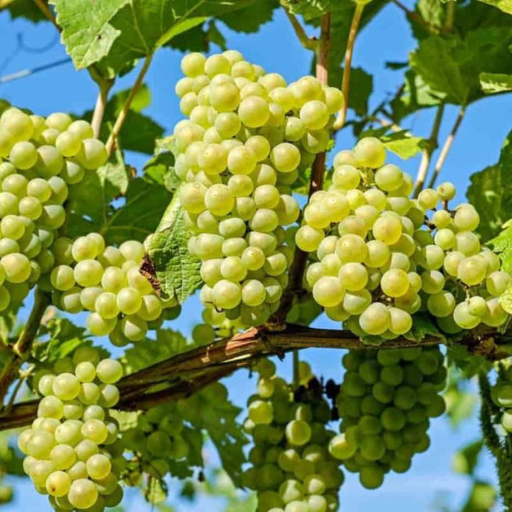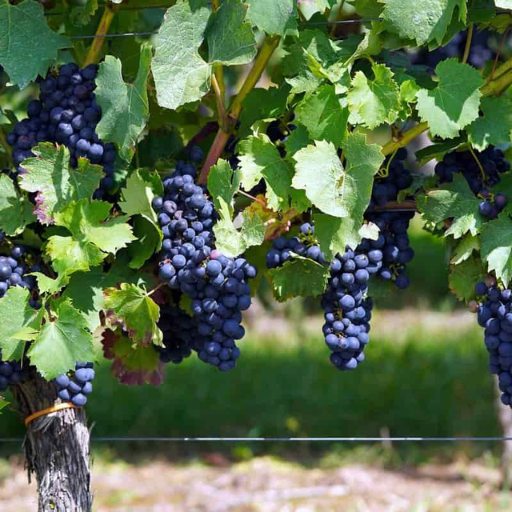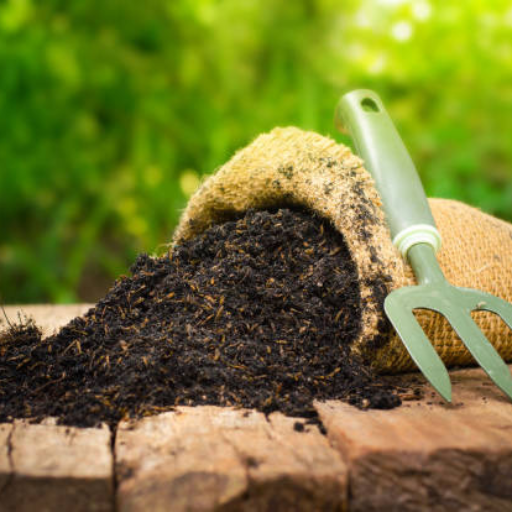Are you looking to enhance the quality and yield of your grape vineyard in an eco-friendly way? This comprehensive guide will take you through everything you need to know about using organic fertilizers to achieve an abundant and healthy grape harvest. We’ll explore the various types of organic fertilizers available, their benefits, and how to apply them effectively in your vineyard. Whether you are a seasoned vintner or a novice grower, this guide aims to provide you with practical insights and actionable tips to nurture your grapevines and promote sustainable agriculture. Unlock the secrets to superior grape production and join us in embracing natural solutions for your vineyard.
What is the Best Organic Fertilizer for Grapes?

The Importance of Soil Nutrients
For grapevines to grow and produce well, soil nutrients are crucial. Primary nutrients for grapes include nitrogen (N), phosphorus (P) and potassium (K) which are referred to as NPK. Nitrogen is useful for vegetative growth that leads to strong vines and foliage production. Phosphorous is important in root development and nutrient uptake, thus giving plants a good base. Potassium helps in fruit development by increasing the size, flavor, and quality of grapes.
Apart from macronutrients mentioned above, grapes require trace elements such as magnesium, calcium, iron, zinc among others. Photosynthesis enzyme activation disease resistance is supported by these elements within the plant’s body. When any of these minerals are deficient it can result in poor growth reduces yields or inferior fruit.
By conducting regular tests on your vineyard soil one can understand what specific needs exist hence allowing for targeted application of organic fertilizers. Consequently this will ensure the grapevines have an all-rounded nutrient profile creating a healthy and productive vineyard ecosystem at large.
Top Organic Fertilizers to Use
- Compost: Compost is one of the best organic fertilizers for grapes because it enriches soil fertility with essential nutrients while improving its structure necessary for better aeration and water retention since Compost also promotes beneficial microbes that make nutrients available to plants.
- Worm Castings: These contain high amounts of nitrogen (N), phosphorus (P), potassium (K) as well as other micronutrients thereby enhancing soil fertility keeping moisture intact as well as encouraging strong roots during early stages of plant establishment. On top worm castings have a slow release rate thus allowing gradual provision of nutrients over time.
- Bone Meal: This has considerable amounts of phosphorus (P) plus some calcium (Ca) making it suitable for stimulating healthy root formation alongside fruitful flowering. This makes it ideal especially where soils are deprived in phosphorus found within vineyards. Most importantly, bone meal is a slow-release fertilizer that provides nutrition for longer durations.
How to Make Home Made Compost
Homemade compost can be created by converting kitchen scraps and yard waste into nutrient-rich soil amendment which is a very simple way of recycling. Here is an outline based on information from credible sources:
- Choose a Compost Bin: Choose the compost bin that best fits your space and requirements. It could be as simple as an open pile, turning bin or commercially made compost tumbler.
- Collect Organic Waste: Obtain green materials (nitrogen-rich) such as fruit and vegetable scraps, coffee grounds and grass clippings. Additionally, collect brown materials (carbon-rich) like dried leaves, straw, and cardboard.
- Layering: Start with a coarse layer such as twigs or straw to help in aeration. After that comes alternating layers of green and brown materials in about 1 part green every 3 parts brown ratio.
- Maintain Moisture: Ensure your compost heap remains as damp as a wrung-out sponge. If too dry, add water; if too wet, add more browns.
- Turn the Pile: Every few weeks turn your compost with a garden fork or rotate the drum on your compost tumbler to aerate it. This expedites decomposition while preventing odors from developing.
- Patience and Monitoring: As time goes by, the materials will decompose into dark crumbly compost which takes anywhere between few months to one year.Basically just check temperature and moisture regularly for optimum conditions.
You can enrich your vineyard soil naturally by using these procedures to create effective homemade compost.
How Often Should You Fertilize Your Grapevines?
Ideal Time for Fertilization
Fertilizing grapevines calls for a well-planned approach that will optimize their growth and fruit yield. As per the best sources, it is advisable to fertilize in early spring when they start coming out of dormancy. This first application should focus on providing nitrogen to support new growth. A second application usually made in late spring or early summer will help maintain the development and fruit set of the vine. It is important to avoid late-season fertilizing as this can produce new growth that fails to harden off before winter, making the vine susceptible to frost damage. To get specific information about your vineyard’s needs, conduct regular soil tests and monitor its condition so as to ensure right nutrients at correct times for optimum health and productivity of grapevines.
Signs Your Grapevines Need Fertilizing
Knowing whether there are nutrient deficiencies in your grapevines is very important if you want to keep your vineyard healthy. Here are some common signs that may indicate that your grapevines need fertilization:
- Yellowing Leaves: Yellow leaves on a grapevine could mean that the plant has a nitrogen deficiency which usually starts with older leaves then spreads to younger ones.
- Stunted Growth: Slow or stunted growth in vines may be due to the lack of crucial elements such as phosphorus or potassium. This affects both foliage and root development leading to less fruit production.
- Poor Fruit Set: Inadequate feeding may lead to a poor fruit set whereby clusters have few berries or are small sized. The insufficient supply results from limited availability of nutrients needed during flowering and fruiting phases.
- Leaf Discoloration and Spots: Yellowing between leaf veins, also called chlorosis, or spotting along with necrotic leaf edges could point out low quantities of some micronutrients like iron, magnesium or zinc.
If you closely monitor these signs and do periodic soil tests, you will easily know what your grapevines require in terms of nutrients and therefore when to apply fertilizers accordingly.
Avoiding Over-Fertilization
Over-fertilization can be as bad for grapevines as nutrient deficiencies; it causes excessive vegetative growth, poor fruit quality and environmental harm. Here are some key strategies to avoid over-fertilization:
- Soil Testing: Before applying fertilizer perform soil tests on a regular basis so that one knows the existing levels of nutrients. This minimizes wastage of minerals as only extra ones are added.
- Correct Dosage: Follow recommended doses depending on results from soil tests and requirements of specific grapevine types you have grown. Do not give in to the temptation of adding more thinking it will promote fast growth or yields.
- Split Applications: Instead of applying a full dose of fertilizer at once, consider split applications. Splitting the application into several times makes nutrient uptake easier and reduces the risk of leaching away.
- Use of Organic Matter: Incorporate compost as an organic matter into the soil to improve nutrient availability and soil structure hence minimizing reliance on synthetic fertilizers.
- Monitor Plant Response: Watch how your grapevines respond to fertilizing them. Based on this information make necessary changes as per vine growth patterns and well-being thereby avoiding over-fertilization.
- Environmental Considerations: Excessive fertilizer negatively affects the environment such as pollution and water contamination. Practice sustainability by reducing runoff that is caused by excess nutrients through other means.
In this way you can develop a balanced approach to fertilizing, which leads to healthy vine growth with high-quality fruit without any risks associated with excessive feeding.
How to Apply Organic Fertilizer to Grape Vines?

Granular vs. Liquid Fertilizer
When choosing between granulated and fluid fertilizers for grapevines, it is important to weigh the pros and cons of each type.
Granular Fertilizer:
- Easy Application: It is easy to apply granulated fertilizers around the base of grapevines whereby they can be incorporated in the soil resulting in a slow continuous release of nutrients.
- Long Lasting: They provide controlled release of nutrients that can last for weeks to months thus minimizing the frequency of application.
- Cost Effective: Generally, these are cheaper than liquid fertilizers and may even be sold in bulk.
Liquid Fertilizer:
- Quick Nutrient Uptake: The plants take up liquid fertilizer quickly, giving them an immediate nutrient boost especially at growing and fruiting stages.
- Accurate Delivery: Such fluids might be mixed with water before being applied into soil or sprayed on leaves for better precision targeting nutrients.
- Flexibility: Liquids can have their concentrations simply adjusted making them ideal for fast rectifications where nutritional deficiencies occur.
Both types are suited to grapevine fertilizer programs. Granulated ones support steady growth over time, while liquids assist with flexibility during certain growth phases as well as fast responses needed for specific times of development.
Step-by-Step Fertilizer Application
Application of fertilizers is not an exception; hence, it demands carefulness so that appropriate nutrients reach plants as required. This is a step by step guide to help you through the application process:
Soil Testing:
- Before any fertilization is done carry out a soil test because this will eliminate excesses that may arise from excessive usage in terms of nutrient provision for your vines.
Selecting the Right Fertilizer:
- From among listed products below select one that suits your needs basing on findings from your soil analysis. For balanced nutrition, use both liquid and granular types together.
Timing:
- Apply granulated type early Spring just before new shoot growth starts. This will ensure that nutrients are released slowly over the growing season.
- Liquid type should be used during growing and fruiting stages to give a nutrient surge. It is very useful when grapevines show symptoms of nutrient deficiency.
Application Method:
- For granulated fertilizer, spread it around the base of the vines evenly. Work it into the soil gently to encourage proper uptake.
- Liquid fertilizers, on the other hand, are mixed with water as directed by their manufacturers. Then they can be applied directly onto soil or sprayed on leaves.
Watering:
- After application of granulated fertilizer, water thoroughly so that the nutrients dissolve and penetrate into root systems better thereby aiding in absorption.
- To avoid burning up of plants and promote efficient uptake using liquid fertilizers ensure even moisture distribution.
Monitoring and Adjustment:
- Monitor vine growth and health regularly; adjust a type or quantity of fertilizer if necessary basing on plant response and visible deficiencies in nutrition for example leaf yellowing.
By following these steps you can help your grapevines get all they need therefore having healthier plants as well as better yield quality.
Best Practices for Vineyard Care
There are a number of key practices that must be followed when maintaining a successful vineyard for grapevine health and productivity purposes.
Soil Health:
- Regularly check for pH levels in soil samples. The best condition is slightly acidic to neutral pH (around 6-7) which favors grapevine growth the most.
- One way of improving soil structure and fertility is by using organic matter such as compost which facilitates better root growth that in turn helps to keep more water.
Pruning and Training:
- To control vine growth removing of dead or diseased wood during the dormant season is important. Well-done pruning increases circulation of air, as well as penetration of sunlight through.
- Trellis system trains vines so they can be able to support fruit weight while having some sort of order in their growing structures. This makes it easier for people to do their maintenance work and harvests.
Pest and Disease Management:
- The approach of integrated pest management (IPM) should be implemented. It includes regular monitoring, biological controls, and judicious use of pesticides.
- Ensure there is enough air movement around the grapevines; this will help reduce moisture content and thus minimize chances of disease attack by applying fungicides when necessary against common diseases powdery mildew and downy mildew.
Irrigation:
- Water young grapevines regularly to establish a strong root system. Mature vines generally require less frequent watering but ensure deep watering to encourage deep root growth.
- Prevent water wastage and promote efficient water use through adopting the use of drip irrigation systems that deliver water directly into the root zone
Harvest Timing:
- Sugar content (Brix level) A good indicator for determining optimal harvest time is observing sugar levels in grapes. The right balance between sugars, acidity, flavors are important for quality fruits as well as wine making purposes.
- When temperatures are cooler i.e., early morning hours, harvest grapes in order to maintain their quality intact till preservation time.
By following these best practices you will have a healthy product with highly productive vineyard where high-quality grapes can be harvested either for wine making or fresh consumption.
Is Organic Fertilizer Better for Grapes Than Synthetic?

Benefits of Organic Matter
Organic matter offers a lot of advantages for grape cultivation that can make it more preferable compared to synthetic fertilizers. Firstly, organic fertilizers enhance soil structure by increasing the amount of organic matter in it thus improving its aeration and water holding capacity. This leads to development of stronger roots and healthier plants too. Secondly, organic matter releases nutrients slowly thus reducing the possibility of leaching and promoting continuous plant growth. Thirdly, using organic fertilizers encourages soil biodiversity which promotes beneficial microorganisms that can suppress pests and diseases. Lastly, organic farming is environmentally friendly since it reduces green house gas emissions from the soil and prevents accumulation of chemicals due to use of artificial manures as fertilizer. By including organic matter in vineyard management plans, growers can achieve higher quality grapes with improved health while conserving the environment.
Comparing Organic and Synthetic Nutrients
When comparing synthetic versus natural nutrients used for grape growing, one should understand their different characteristics and implications. On the other hand, composts made from kitchen waste or cow dung have many elements that cater for long lasting soil fertility so as to maintain healthy plants on any farmland. They also help in building up good soil structure thereby enhancing microbial activities while minimizing nutrient losses through leaching.
Conversely, synthetic fertilizers are expertly formulated in terms of nutritional components allowing precise nutrient management strategies. They are able to promptly fix any deficient minerals thereby supporting rapid growth rates within plants However; heavy reliance on artificial manures may lead to land infertility as well as pollution from runoff.
Ultimately this will depend on what specific needs each vineyard has; whereas organics are better when thinking about sustainable practices and long-term impacts on soils health the synthetics tend to provide an immediate way out whenever there is a problem especially for correcting deficiencies fast enough during high-yield targets (Integrating both: Balancing) . Grapevine growth rates can be maximized through combining organics and synthetics, the two types of inputs with integrated nutrient management techniques.
Impact on Soil Health and Sustainability
The effects of nutrient management on soil health and sustainability are profound. Organic manures enhance soil fertility by improving soil structure, increasing water retention capacity and enhancing the diversity of species in the soil ecosystem. Similarly, high levels of organic matter encourage beneficial micro flora that are necessary for both nutrient cycling and disease suppression. Moreover, organic farming minimizes chances of harmful chemical runoff into water bodies hence protecting water quality as well as other aquatic life forms.
In contrast, extensive use of synthetic fertilizers results in gradual degradation of soils with time. Although they supply nutrients immediately, they may cause disturbance to pH levels within the soils and decrease its organic content (Generalized). Consequently, these lead to poor soil structure which will result in reduced infiltration rates for water as well as an edge towards erosion conditions. Also, runoff from synthetic fertilizers leads to eutrophication where excessive nutrients enter waters causing death to fish through oxygen depletion.
Therefore, using organic fertilizer or applying an integrated nutrient management approach can help conserve sustainable soil health. This method reconciles quick release characteristic of artificial manures with long-term gains derived from organics hence ensuring maximum grapevine yield as well as environmental friendliness (Balances).
What Nutrients Do Grapevines Need to Thrive?

Essential Macro and Micronutrients
It is necessary to provide grapevines with both macro and micro nutrients in balanced quantities for their proper growth. Macronutrients such as nitrogen (N), phosphorus (P) and potassium (K) are important for basic processes of growth. When it comes to the plant’s overall health, foliage development, vigor, and improved overall plant condition, nitrogen is of great importance; on the other hand; phosphorus promotes root development and flowering. When fruiting is taking place in the vineyard, potassium enhances it by improving vine resistance to diseases. Besides these main macronutrients, there exist a number of secondary macronutrients such as calcium (Ca), magnesium (Mg) and sulfur (S). They play an essential role in cellular functions that keep cell walls strong.
On the other hand, micronutrients are needed in small quantities but they are equally essential. These include iron (Fe), manganese(Mn), zinc(Zn), copper(Cu), boron(B) and molybdenum(Mo). Each element has a particular function in grapevine health for instance; iron is required for chlorophyll formation while zinc is necessary for enzyme action and hormone production. By giving grapevines a combination of all these minerals at once I can push them towards massive vegetative growths high yielding fruits coupled with general healthy plants’ life.
The Role of Nitrogen, Phosphorus, and Potassium
My research shows that nitrogen(N), phosphorus(P), and potassium(K) are primary nutrients responsible for good grapevine health. To have very vigorous green foliage on my vines when also ensuring fast growing plants everywhere else around requires enough nitrogen content in the soil where grapes are grown on which would result into lush green leaves which could be seen on the vines without much struggle once there was sufficient nitrogenous manure applied or not applied at all leading to stunted growth and poor leaf development of grapevines. Phosphorus is therefore vital for establishment of a good root system as well as promotion of healthy flowering which in turn results into better fruit set. It has a few responsibilities including energy transfer within the plant, metabolic processes among others. Potassium on the other hand, encourages strong fruit development and contributes to vine resistance against stress factors like disease. This element helps to regulate water uptake and plays a role in enzyme activation which are critical to cellular health. As such, I can increase productivity and overall health by maintaining an appropriate balance of these three elements in my grapevines.
Using Soil Tests to Determine Nutrient Needs
Carrying out soil tests is one of the important steps towards effective management of grapevine nutrition. By checking the nature or condition of soil samples, I can determine how much nutrient it contains and where there are any lacking or have been over applied. At that point I will know how best to meet the needs based on what results are achieved from their testing since it will provide me with information regarding specific nutrient requirements for my farmyard. Additionally, soil pH, organic matter content, and content levels for major macro as well as some micronutrients may also be tested using a comprehensive soil sampling strategy. These details would enable me make more informed decisions about what types and amounts fertilizers should be used so that grapevines may have a balanced diet necessary for optimum growth and fruit production. Thus regular soil sampling helps me monitor changes over time when am adjusting my management practices aimed at preserving vineyard productivity along with soil health.
Frequently Asked Questions (FAQs)

Q: My grapevines have symptoms of potassium deficiency. What should I do?
A: If your grapevines exhibit potassium deficiency, that is, yellowing leaves and poor fruit set, then try a potassium fertilizer. Potassium sulfate et al are great for replacing the levels in the soil.
Q: Are there any specific fertilizers recommended for organic grapes?
A: For organic grapes, one is advised to use compost, manure or plant-based fertilizers. This way they will get all needed nutrients without using chemicals that are synthetic thus keeping to the principles of organic farming.
Q: How often should I apply fertilizer to my grapevines?
A: The frequency of fertilizing grapevines depends on soil fertility and nutrient requirements of various varieties. In most cases applying a balanced fertilizer annually before growing season begins such as during spring is sufficient enough. Soil test results may necessitate further applications.
Q: Can you over-fertilize grapevines?
A: Yes, over-fertilizing grapevines can lead to nutrient imbalances, excessive vine growth and poor fruit quality. It’s important to adhere to recommended fertilizer rates based on soil tests and not to feed them too late in the season as this affects ripening.
Q: Why is 10-10-10 fertilizer significant in relation to grapevines?
A: A 10-10-10 fertilizer when applied serves as an all-purpose balance liquid composed of equal parts nitrogen, phosphorus and potassium; formulated specifically for healthy vine growths; increased fertility of soils; and strong production of fruits by the vines throughout.
Q: How can I make sure my organic grapevine receives proper nutrition?
A: Test your soil regularly for nutrient levels and deficiencies so that you can ensure your organic grapevine has adequate nutrition. Enhance soil with organic fertilizers and composts as well as natural amendments when necessary; this helps keep nutrition in balance for the best health and fruit production of vines.






